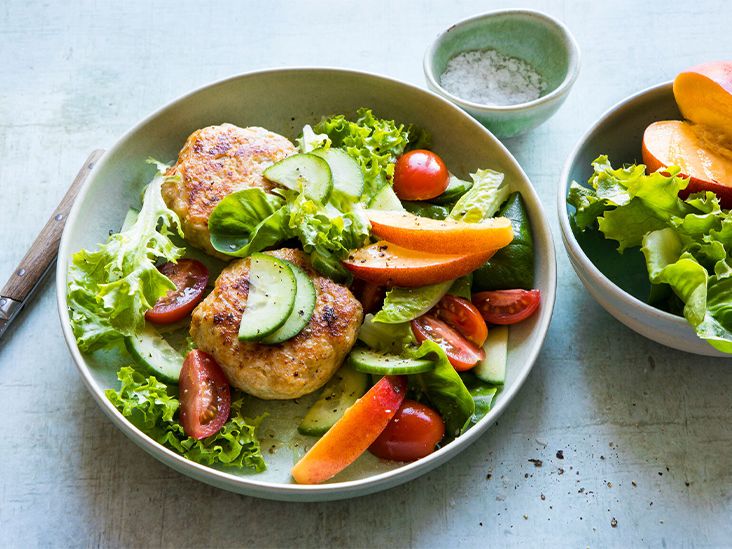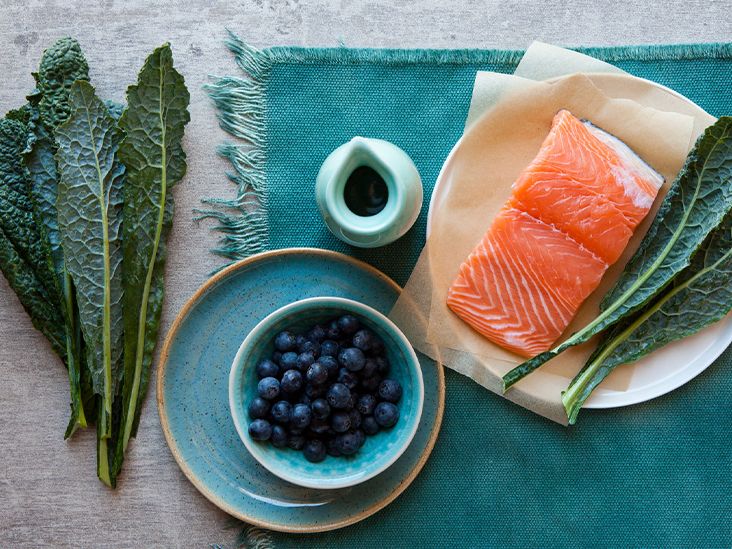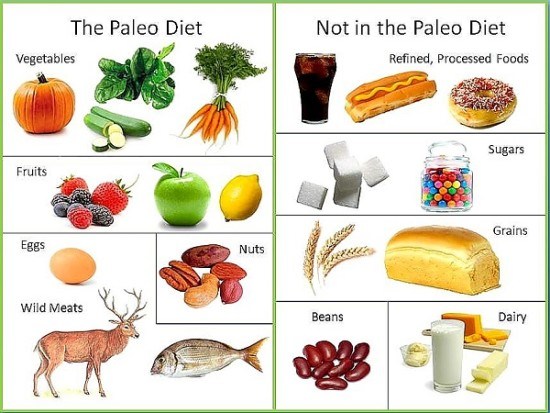The Primal Blueprint, and the typesetting of the same name, offers a framework for achieving your personal weightier health, vitality, and longevity. It is organized into 10 Primal Laws derived from anthropology, sociology, biology, psychology, and worldwide sense. These laws describe the diet, movement, and lifestyle practices that lead to optimal gene expression—the practices that have unliable humans to thrive for hundreds of thousands of years, but which many people struggle to unzip in the modern world.
To eat equal to the Primal Blueprint ways choosing foods that provide the soul with all the towers blocks it needs to function (amino acids, fatty acids, nutrients, and more) while lamister foods, and modern “frankenfoods,” that erode your health. It ways giving your soul all the energy it needs to be strong, active, and well.

In wordplay to the hugely contentious question of which diet—plant-based, vegan, carnivore, Mediterranean, “everything in moderation”is best, the Primal Blueprint puts along a simple answer: The weightier nutrition for humans is one comprising the foods that humans are designed to eat.
Primal Diet: Racial Eating in the Modern World
Despite what you might have heard well-nigh Primal, paleo, and the increasingly unstipulated racial health movement, the goal isn’t to get you to eat “like a caveman.” For one thing, many of the foods that were virtually millennia ago have been reverted by natural incubation and human agriculture. Furthermore, the foods your far-back siblings ate depended entirely on the geographic location from which they hailed.
The environments in which we eat are moreover different. Supplies has never been increasingly well-healed and easier to procure. We are increasingly stressed, increasingly rushed, and increasingly sedentary. We are less exposed to dirt and the twin microbes that populate the gastrointestinal tract.

In short, the idea isn’t that we should be eating exactly like our siblings did. The Primal Blueprint takes lessons from human history and modern science to decide what, when, why, and how (much) to eat—and, importantly, what to avoid. Primal Laws #1 and #2 imbricate the what and the why. The how and when are discussed extensively here on the blog; I’ll provide an overview in this post.
The Primal Blueprint Nutrition Laws
The 10 Primal Laws start with diet—what to eat and what to avoid. That’s considering of all the environmental inputs we can leverage for proper gene expression, nutrition arguably has the biggest impact in the shortest time.
Primal Law #1: Eat lots of animals, insects, and plants.
This is the vital unravelment of everything our siblings ate to get the protein, fats, carbohydrates, vitamins, minerals, antioxidants, phenols, fiber, water, and other nutrients necessary to sustain life, build strong muscles, expend lots of energy each day moving about, maintain healthy immune systems, evolve larger brains, and raise healthy children.
As you can see, this law leaves plenty of room for you to structure your nutrition equal to your personal tastes, preferences, and needs. Perhaps you prefer to eat relatively increasingly plants than animals, or vice versa. You might be a gourmand who takes unconfined pleasure in creating elaborate dishes and trying new foods, or maybe you’re content to repeat a few simple meals over and over. As long as you prioritize close-to-nature foods from these wholesale categories, you’re headed in the right direction.
Read increasingly well-nigh Law #1 and get specifics well-nigh what to eat equal to the Primal Blueprint here.
Primal Law #2: Stave poisonous things.
Humans’ worthiness to exploit scrutinizingly every corner of this earth was partly predicated on their worthiness to slosh vastly variegated types of plant and unprepossessing life. Exploring a new environment and trying new foods posed a danger: the new supplies might contain potent toxins.

You probably don’t have to fear food-borne illness anymore, whispered from an occasional tour with non-lethal supplies poisoning. Instead, we contend with ubiquitous modern foods that undermine our health increasingly slowly and increasingly insidiously. Whereas our ancestors’ keen senses of smell and taste helped sort out the good from the bad, our worthiness to distinguish good from bad is now thwarted by supplies manufacturing and clever marketing.
Macronutrient intake
Protein: Protein takes priority. The amino acids in protein don’t just go toward making muscle. They’re necessary for all structures in the body, for making hormones and neurotransmitters, and for facilitating enzymatic reactions. Protein is moreover highly satiating, quelling excessive hunger and the urge to snack virtually the clock. Most people probably aren’t eating nearly unbearable protein, expressly as they get on in years.
Carbohydrates: Primal is a “low-carb diet” in comparison to the Standard American Diet, and similar ilks, in which grains and sugars run rampant. A primary goal of the Primal Blueprint is for you to wilt fat-adapted, so fat becomes a primary fuel instead of glucose (sugar). That doesn’t midpoint Primal is anti-carb. Carbs are fuel, but excessive carb intake leads to chronically upper insulin and the health consequences you can expect as a result. Limit your carb intake to nutrient-dense varieties and only in the value that you need to provide glucose to the smart-ass and fuel your activities. (Hint: it’s less than you probably think.)
Fats: Learn to love them. Fats are the fuel of nomination in the Primal Blueprint. Beside providing energy, they are necessary for unrepealable crucial metabolic functions and have little to no impact on insulin. On a Primal eating style, the plurality of your calories will likely come from healthy fats.
What Well-Nigh Calories?

Most popular diets squint at overall calories as the main factor in weight loss, weight gain, and, by implication, overall health. They don’t superintendency well-nigh where those calories come from. Despite that timeworn Conventional Wisdom mantra that a calorie is a calorie,” for reasons I explain in depth elsewhere, a calorie is not a calorie. The variegated macronutrients we eat have variegated effects in the body, and diets that focus only on calorie restriction miss the point of eating to be healthy, not just skinny.
That doesn’t midpoint that calories don’t matter. They do. Or rather, it’s important not to intake a lot increasingly energy than you expend over the undertow of weeks, months, and years. Energy glut is a impetus for many downstream health issues. I just don’t think calorie counting is the wordplay for most people.
That’s why the Primal Blueprint doesn’t prescribe specific calorie intakes. Our genes want us to be lean and fit. And that starts with eating from the long list of Primal Blueprint healthy foods and trying to stave that other list of grain-laden, sugary, processed, and otherwise unhealthy foods.
When: Meal Timing, Fasting, and Seasonal Eating

Remember that our genes are yawner to the way our siblings ate: intermittently, sporadically, sometimes in large quantities, and sometimes not at all for days. This random or “non-linear” eating pattern kept their persons in a unvarying state of preparedness. That said, for newcomers to the Primal Blueprint, what you eat is increasingly important than when. There’s no point worrying well-nigh carb cycling or optimal meal timing if you’re still eating mostly grains and sugars. That’s all stuff you can worry well-nigh lanugo the road.
When you’re ready, I’ve written well-nigh intermittent fasting (IF) extensively on the blog. As I’ve said many times, when it comes to health and longevity, most of the magic happens when we aren’t eating. It’s important to requite your soul time to engage in the maintenance, repair, and towers processes that are inherent to health and healthy aging. IF has incredible benefits, and you have options when it comes to implementation.
A Final Word well-nigh Supplies Quality
Although it’s not explicitly covered by the Primal laws, food quality is an important consideration for Primal eating. In a perfect world, a Primal nutrition would subsume grass-fed/pastured beef and dairy products, pastured chicken and pork, wild seafood, and produce raised organically or pesticide-free.

The world isn’t perfect, of course, and the “ideal” foods aren’t unchangingly misogynist or budget-friendly (although it’s worth pointing out that few things are a largest investment of time and money than high-quality food). The goal of a Primal nutrition is to eat the weightier foods you can, understanding that you might need to compromise on organic or buy conventionally raised meat sometimes. Don’t sell yourself short, but moreover don’t let perfect be the enemy of good.
I started Primal Kitchen in order to make healthy eating easier and increasingly delicious. What started out as just mayo has blossomed into an unshortened line of better-for-you condiments, sauces, oils, and dressings. Selfishly, I was sick of having to make all my own condiments at home. I moreover heard over and over from people in the Primal polity that convenience was a major windbreak to fully embracing a Primal way of eating. So, I made products with avocado oil and without refined sugar, seed oils, or other questionable ingredients—products that make meat and vegetables taste good. Now, if you do have to compromise, it won’t be on flavor.
In conclusion, a primal diet can have a profound impact on your overall health and well-being. By focusing on whole, unprocessed foods that our bodies are naturally designed to digest, you can experience weight loss, improved digestion, increased energy levels, reduced inflammation, and improved mental clarity. If you are seeking a sustainable and healthy way of eating, a primal diet may be worth considering. Remember to consult with a healthcare professional before making any major dietary changes.
Frequently Asked Questions!
Is primal diet a real thing?
A base eating routine is an approach to eating that depends on how early people are accepted to have eaten. It's an eating routine high in protein and fat and low in carbs. The basic eating routine was classified by Imprint Sisson, a previous tip top competitor and wellbeing mentor.
Is cheese OK on primal diet?
The Base Outline is an eating regimen and way of life plan that is like the Paleo plan, yet for certain key distinctions. Like the Paleo plan, Basic Sustenance underlines entire, natural food sources and confines grains, vegetables, and handled food sources. Be that as it may, it additionally takes into account some dairy items, including curds.
What are the risks of the primal diet?
This diet can jeopardize you for lacks in calcium and vitamin D, which are basic to bone wellbeing. Simultaneously, you might consume immersed fat and protein far above prescribed levels because of eating such a lot of meat. This can cause an expanded gamble of kidney and coronary illness and certain malignant growths.
Can you eat potatoes on primal diet?
By and large, natural potatoes, all things considered, can be essential for a paleo diet. Likewise to grains, which are untouchable on paleo, potatoes are boring and wealthy in carbs. Notwithstanding, potatoes are really a sort of boring vegetable that develops underground, known as a tuber ( 2 , 3 ).







